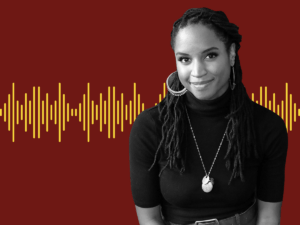
March 9, 2020; International Press Service, “Opinion”
Many religious traditions have social justice efforts that are embedded either as responsibilities or as tradition in their belief systems. These institutions also move to respond to immediate crises in the communities that host them, so mobilizing in interfaith common cause is anything but new. Interfaith coalitions have built-in constituencies in their home communities and the kind of knowledge that is a must both post-disaster and in crises. Still, networks like these have not always been fully optimized.
With that in mind, we look at Religions for Peace (RfP), a global coalition of religious communities, which recently released its latest strategic plan for the years 2020 to 2025. The document outlines the organization’s six main priorities to advance common action for peace, which are:
- Promote Peaceful, Just, and Inclusive Societies
- Advance Gender Equality
- Nurture a Sustainable Environment
- Champion Freedom of Thought, Conscience, and Religion
- Strengthen Inter-religious Education
- Foster Multi-religious Collaboration and Global Partnership
The strategic plan is the culmination of an extensive stakeholder engagement process. At the start of the process, the organization surveyed its global membership. Then, during the organization’s 10th World Assembly in August 2019, Religions for Peace convened over 1,000 representatives from 125 countries to deliberate on action items. The organization was also intentional in ensuring that the voices of women, youth, and indigenous communities were included in the overall plan. RfP engaged organizations affiliated with its Interfaith Rainforest Initiative, Women of Faith, and Interfaith Youth Networks. The plan was further refined during a multi-stakeholder conference in New York, where more than 250 global religious peacebuilders, government officials, diplomats, representatives from the UN, and philanthropists provided input.
Building on its previous work, RfP’s strategic goals advances the organization’s vision of getting “the world’s religious communities [to] cooperate effectively for peace.” Further, the goals align with ten of the United Nations Sustainable Development Goals (SDGs). While the group notes six strategic goals, the breakdown of SDG indicators in relation to the activities the organization plans to undertake suggests a greater focus on three areas that include gender equality, climate action, and peace, justice and strong institutions.
Sign up for our free newsletters
Subscribe to NPQ's newsletters to have our top stories delivered directly to your inbox.
By signing up, you agree to our privacy policy and terms of use, and to receive messages from NPQ and our partners.
Alignment with the UN SDGs is further reinforced through a report released by the agency, “Religion and Development Post 2015.” In the report, the UN stresses the importance of religious bodies in achieving sustainable development goals:
Given the realities of service provision, resource capacity, political presence as well as the potential of faith leaders and organizations to mitigate or aggravate a variety of conflict intra and inter-communities, being knowledgeable of the work of FBOs [faith-based organizations] is necessary in order to benefit from the social capital available for sustainable human development, human rights, and peace and security.
Likewise, Religions for Peace recognizes its unique position in terms of infrastructure, influence, and social capital to influence large populations to act in the common good. For instance, RfP has an extensive history of multi-religious action, including mediating the release of child hostages in Sierra Leone, building partnerships between indigenous and religious communities for rainforest protection, and mobilizing 21 million youth for global disarmament. However, even in its long list of successes, RfP sees how religion can be misused, especially to justify violent conflict and extremism. Through implementation of its strategic plan, the organization intends to build on its experience with multi-religious engagement. In fact, one of the hallmarks of its plan is the ability to create action-based, strategic goals that are universally applicable to any global context. By providing a flexible plan, RfP offers its membership the opportunity to participate in meaningful and effective ways that accommodates varying cultures, religious beliefs and government structure. Likewise, the integration of economic, social, and environmental aspects throughout the strategic plan reinforces the organization’s belief in the interdependency of social issues and solutions.
The test, as with any other ambitious plan, will be whether RfP will be able to follow through. The group has outlined activities, concrete progress indicators, and outcomes, which indicates detailed progress monitoring will most likely occur. Additionally, the organization has explicitly stated how it will operationalize each goal—through advocacy (policy formation), capacity building (coalition-building), knowledge management (resource guides) and humanitarian support (resources). NPQ looks forward to seeing what the organization accomplishes by 2025.—Chelsea Dennis












